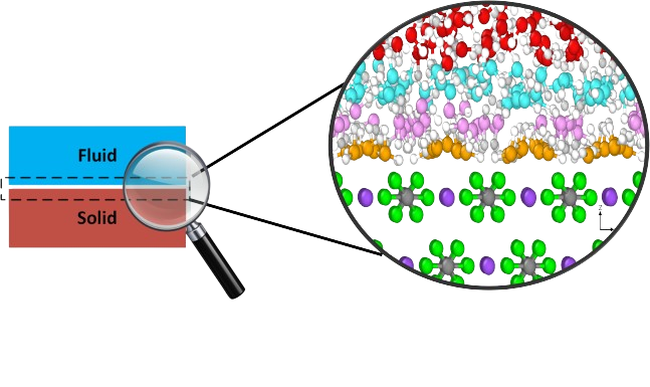The PhD defence and trial lecture will be held in Auditorium 1 in The Geology Building. In some cases, it will be possible to attend the trial lecture and dissertation digitally, in that case a link to Zoom will be posted.
Trial lecture
Friday 21 June, 10:15-11:00, Aud 1, The Geology Building:
CO2 storage compared with CO2 utilisation: present and future
Conferral summary (in Norwegian)
Grensesnittet mellom væsker og faste mineraloverflater spiller en sentral rolle i naturvitenskap og ingeniørfag. I denne doktorgradsavhandlingen ble molekylærdynamikk simulering benyttet for å forstå interaksjonen mellom fluid-molekyler og en mineraloverflate. Videre ble Statistical Associating Fluid Theory (SAFT) brukt til å modellere den komplekse termodynamikken ved grensesnittet, og å inkorporere effekten av mineraloverflaten på de fysikokjemiske egenskapene til vann innesluttet i en nanopore.
Main research findings
Popular scientific article about Ahmadi’s dissertation:
Exploring Fluid Properties in Confined Mineral Interfaces: A Molecular Investigation
The fluid-solid interface, with its interdisciplinary nature, plays a pivotal role across various fields in science and engineering. Upon closer examination, particularly at the nano-scale, this interface exhibits complex characteristics, where neither the fluid nor the solid is equivalent to their bulk counterparts. This disparity prompts fluid molecules to reorganize and equilibrate with the mineral surface under new conditions, resulting in deviations in confined fluid properties.
To analyze these deviations, the Statistical Associating Fluid Theory (SAFT) is employed to model the complex thermodynamics at the fluid-mineral interface and incorporate the mineral effect into confined fluid properties. Subsequently, the First-principles Molecular Dynamics (MD) simulation technique is employed to calculate confinement parameters, yielding promising results.
In subsequent steps, MD simulation is used to explore the impact of Low Saline Water (LSW) injection in petroleum carbonate reservoirs, with the aim of enhancing oil recovery (EoR). The findings indicate that the expansion of the Electrical Double Layer (EDL) could be a primary factor contributing to oil displacement.

Photo and other information:
Press photo: Sajjad Ahmadigoltapeh, portrait; 900px. Photo: Private
Other photo material: Figure with description and credit as specified in the article above, size 650px.
